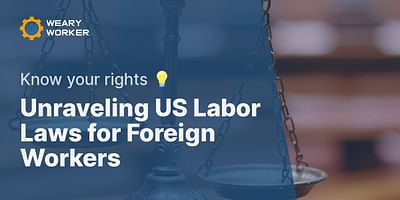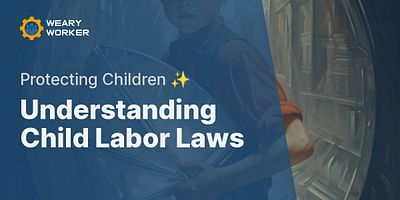Jackson King is a labor rights activist with a passion for social justice. He uses his writing to inspire action and change. Jackson is a Georgia native and enjoys southern cuisine.
The improvement in workers' rights in the US can be attributed to a variety of factors, including the implementation of federal child labor laws and the expansion of labor unions. Let's delve into how these elements have played a significant role in shaping the landscape of workers' rights.
📜 Unraveling the Impact of Federal Child Labor Laws on Workers' Rights
The introduction of federal child labor laws was a significant milestone in the improvement of workers' rights. Prior to these laws, children were subjected to hazardous working conditions, long hours, and low wages. The Fair Labor Standards Act (FLSA) of 1938 was a turning point, setting federal standards for child labor. It restricted the hours children could work and the types of jobs they could perform, offering increased protection.
The FLSA set minimum ages for employment: 14 for most non-agricultural work, 16 during school hours, and 18 for jobs declared hazardous by the Secretary of Labor. This act, along with subsequent amendments, paved the way for safer working conditions for all workers, not just children, by establishing a federal minimum wage and overtime pay.
💪 The Power of Unity: How Labor Unions Transformed US Workers' Rights
Labor unions have been instrumental in improving workers' rights. They've fought for higher wages, safer working conditions, and fair treatment from employers. The rise of labor unions in the US can be traced back to the late 19th and early 20th centuries, a time when workers faced harsh conditions with little protection.
Unions like the American Federation of Labor (AFL) and the Congress of Industrial Organizations (CIO) fought hard for workers' rights, leading to significant improvements. For instance, the 1935 National Labor Relations Act (also known as the Wagner Act) guaranteed the right of private sector employees to organize into trade unions, bargain collectively, and strike.
🔍 Beyond the Obvious: Other Pivotal Factors in the Evolution of Workers' Rights
While federal child labor laws and labor unions played a significant role, other factors also contributed to the improvement of workers' rights. These include social activism, legal decisions, and legislative measures at both state and federal levels.
For instance, the Civil Rights Act of 1964 made it illegal to discriminate on the basis of race, color, religion, sex, or national origin, significantly expanding workers' rights. Additionally, the Occupational Safety and Health Act of 1970 mandated safe and healthful working conditions, further protecting workers.
US Labor Laws History Quiz
Test your knowledge on the history of US labor laws and the factors that led to the improvement of workers' rights in the US.
Learn more about 📚 US Labor Laws History Quiz 🧠 or discover other Weary Worker quizzes.
In conclusion, the improvement in workers' rights in the US is a result of numerous factors, with federal child labor laws and the expansion of labor unions playing a crucial role. However, the fight for workers' rights is ongoing. As society evolves, so too do the challenges facing workers. It is essential to stay informed and advocate for further improvements to ensure that all workers are treated fairly and safely.
Let's delve deeper into the history and importance of labor unions in the US with this insightful video.
As we can see from the video, labor unions have had a significant impact on workers' rights throughout history, and they continue to be relevant in today's evolving work environment. However, there is still much work to be done to ensure fair treatment for all workers.















